- Details
The interior design for a hotel is a big investment. The size of the financial ask might leave some hoteliers asking this question: Does hotel interior design matter? Short answer, yes. Long answer, there are thirteen key ways a hotel’s interior design positively affects its performance, reputation, and profits. Learn about them here:
Hotel Interior Design: 13 Reasons to Invest
Thoughtful interior design creates a positive first impression.
Once someone sets foot in a hotel, the interior design helps set the mood and atmosphere. It contributes to that pivotal first impression.
This affects anyone who interacts with or enters the hotel. That includes the following:
- Guests
- Event planners
- Event attendees
- Staff members
Your hotel is not just a place of accommodation; it’s part of a larger brand story. The right interior design helps reinforce and tell that story.
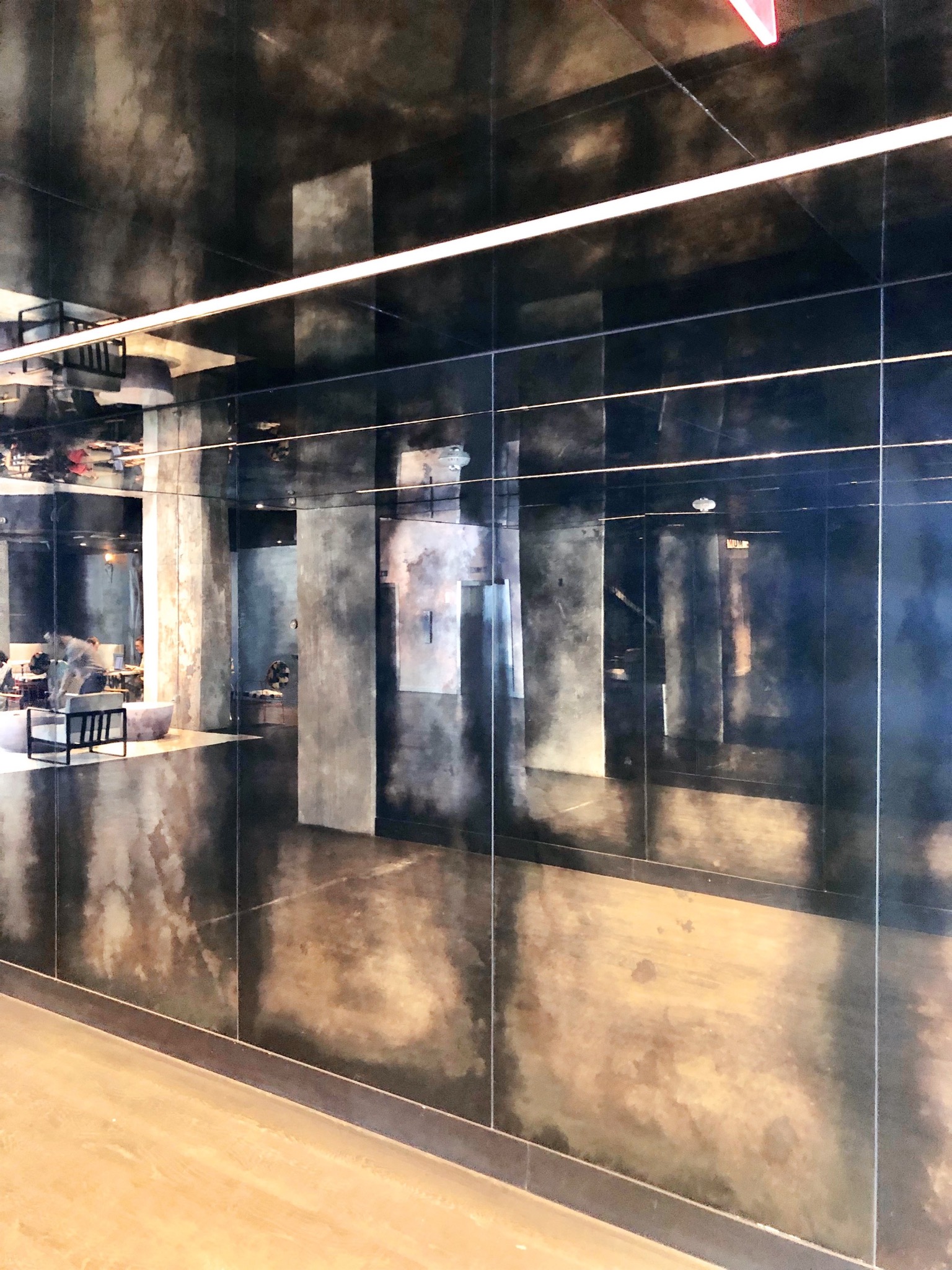
Interior design influences patron experience.
Whatever experience you’re trying to create at your hotel—relaxing, luxurious, opulent, homey—interior design contributes to those feelings.
When the interior design elements create a polished, clean, modern aesthetic, guests leave with a more favorable overall impression of that hotel. More importantly, though, they have a more favorable impression of their experience at the hotel.
When you can generate those positive customer experiences, you benefit from satisfied customers. Whether it’s in returning guests or referred patrons, those positive experiences translate directly into dollars and cents. This helps offset some of that up-front interior design cost.
To learn more, check out this study on the link between design and increased consumerism.
The right interior design promotes more spending at the hotel.
When people are staying in a hotel they perceive to be upscale, they are more willing to spend money. Whether you’re trying to encourage people to eat at the onsite restaurant, purchase from gift shops, or book another stay, subtle, clever interior design moves can help facilitate those choices.
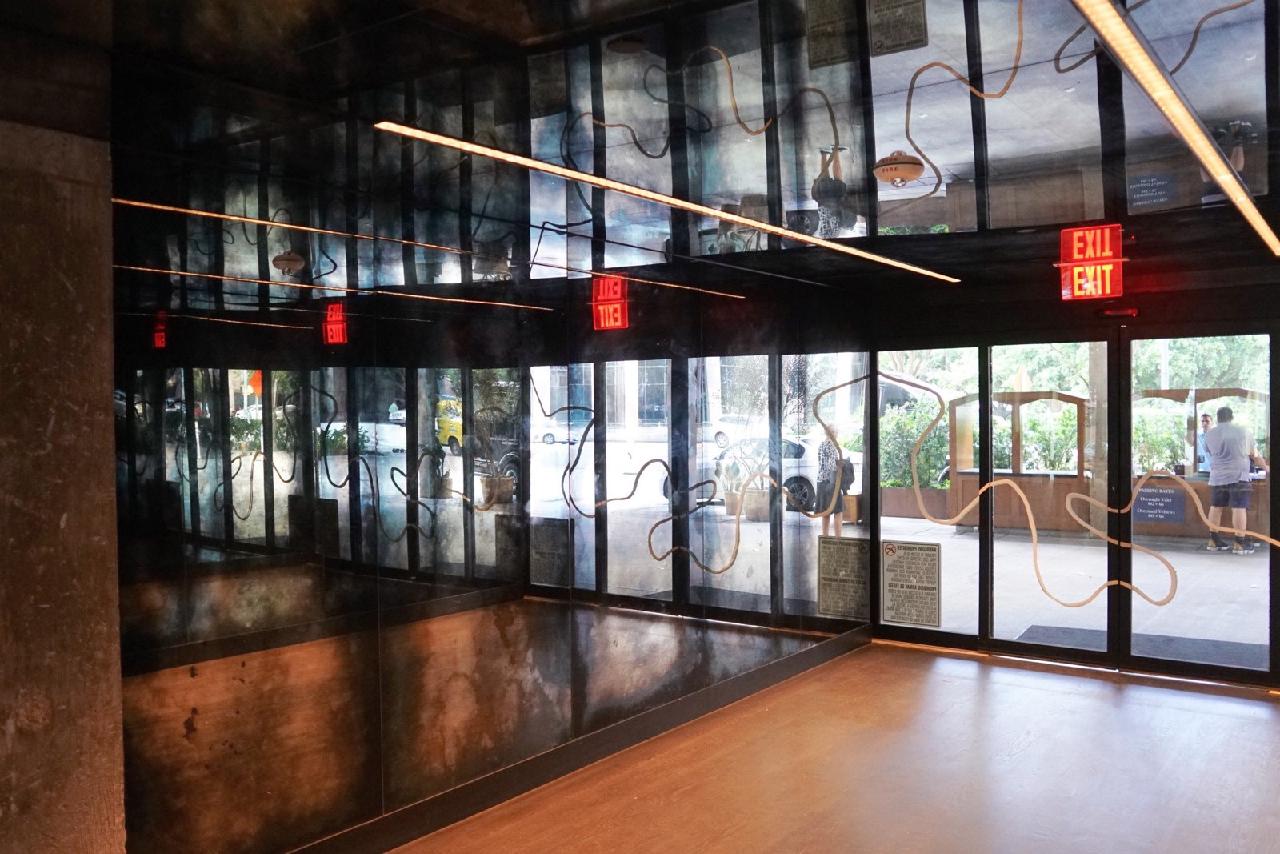
Beautiful interior design encourages positive word of mouth.
Closely linked to guest experience is word of mouth.
Satisfied, impressed guests are apt to share their experiences with friends, family, and colleagues. But dissatisfied guests are likely to talk as well.
In fact, they are more likely to talk about their experience. A shocking 95 percent of dissatisfied customers told at least one person about the bad experience. Compare that to 87 percent of people who had a positive experience.
Wow your guests with stunning interior design, and that will contribute to an overall positive experience. This, in turn, will lead to better word of mouth about your brand.
Be stunning enough to promote brand loyalty.
People are creatures of habit. If they adore your restaurant, you’re going to come to mind first when they’re hungry. If they love how they feel when they’re staying at your hotel, they’re likely to come back again and again.
Creating a striking, unforgettable visual display with your interior design can encourage those positive brand associations. It can take strangers to customers and customers to brand advocates.

Use interior design to communicate a brand promise.
Every specific hotel and hospitality venue has a unique brand promise. Make sure your interior design is conveying and supporting that message.
If you want to stand for luxury, modernity, and contemporary charm, that’s what people need to experience when they step into your hotel. Use textures, colors, and materials that convey your promise in a visually appealing way.
Upscale interior design alludes to other hotel-provided amenities.
If your hotel offers fine dining, spa treatments, luxury pools, state-of-the-art fitness rooms, or any other amenities in that line, make sure your interior design aligns with those offerings.
Interior design helps create that first impression, and people will make judgments about what kind of overall experience the hotel will offer based on that impression. Make sure your hotel is sending the right message.
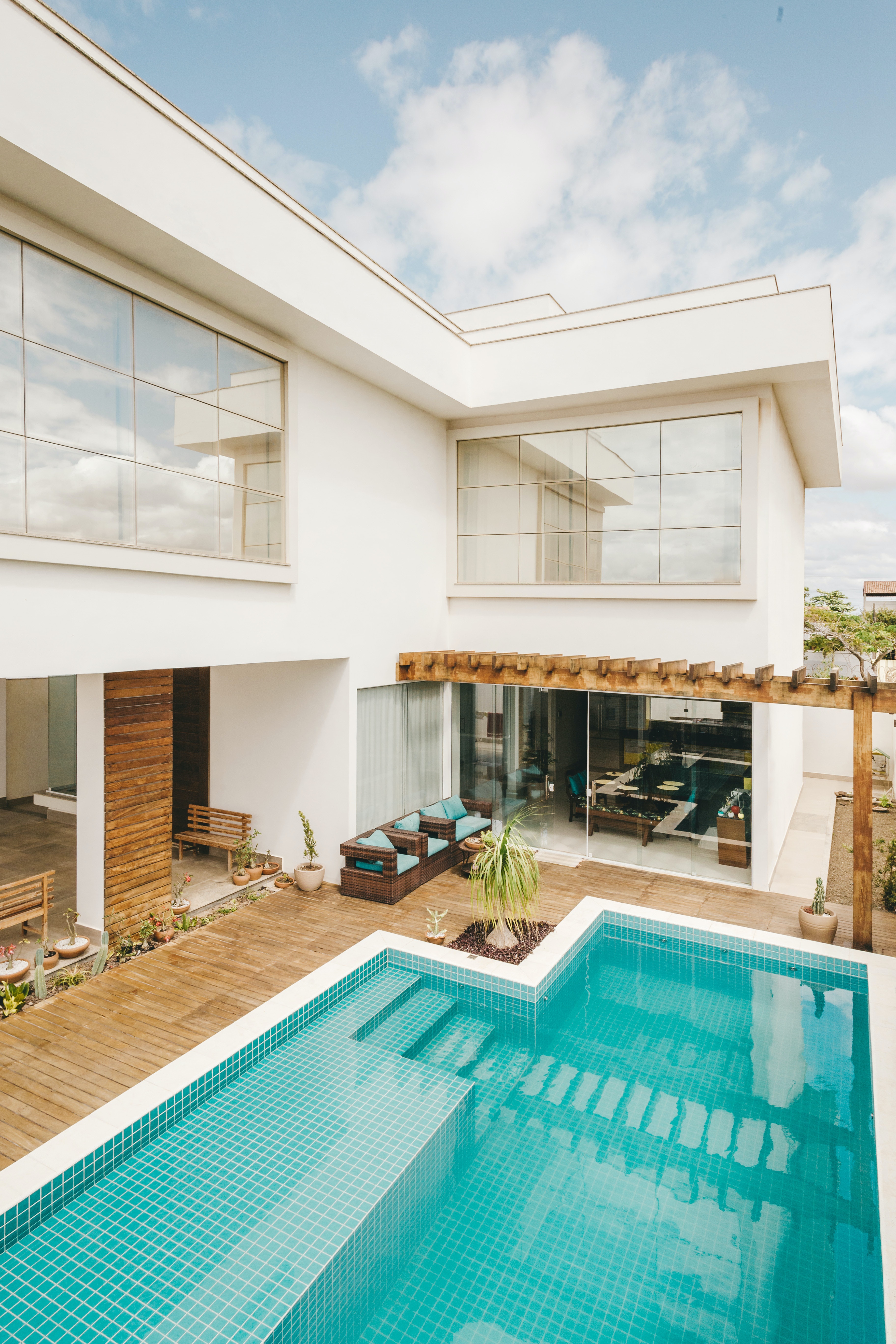
Interior design helps you speak to your ideal audience.
Your hotel’s interior design is very much a part of your brand. It conveys what kind of an experience to expect at that hotel.
With well-chosen interior design choices, you can attract your ideal customers. If you’re a luxury hotel, for example, you can convey that through fine leather furniture, upscale finishes, trendy art selections, or unique touches like custom framed antique mirrors.
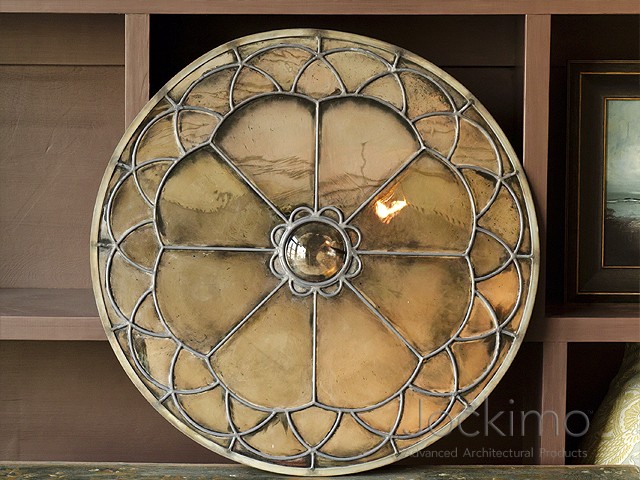
Be unique in your field, and stand out from the competition.
The hospitality industry is notoriously competitive. Truly stunning interior design that conveys the right mood, atmosphere, and branding can be a differentiator to your hotel.
Take the Corinthia Hotel, for example. Based in London, England, this luxury hotel features a Baccarat chandelier in the lobby lounge. Adorned with 1,001 crystals, it’s the largest of its kind ever created, and the price tag came in at $1.6 million.
The hotel displays this stunning piece of artwork worth it because it’s the centerpiece of the hotel. It’s a conversation starter. It draws people to see it. It helps Corinthia separate and differentiates itself from other luxury hotels.
The right interior design can expand your hotel into event offerings.
When your interior design conveys the right message of upscale luxury, you open up new financial possibilities.
One lucrative opportunity for hotels is event hosting. This can range from weddings to reunions to conferences.
With the right interior design, you create a brand that promotes and encourages these kinds of events as part of your set offerings.
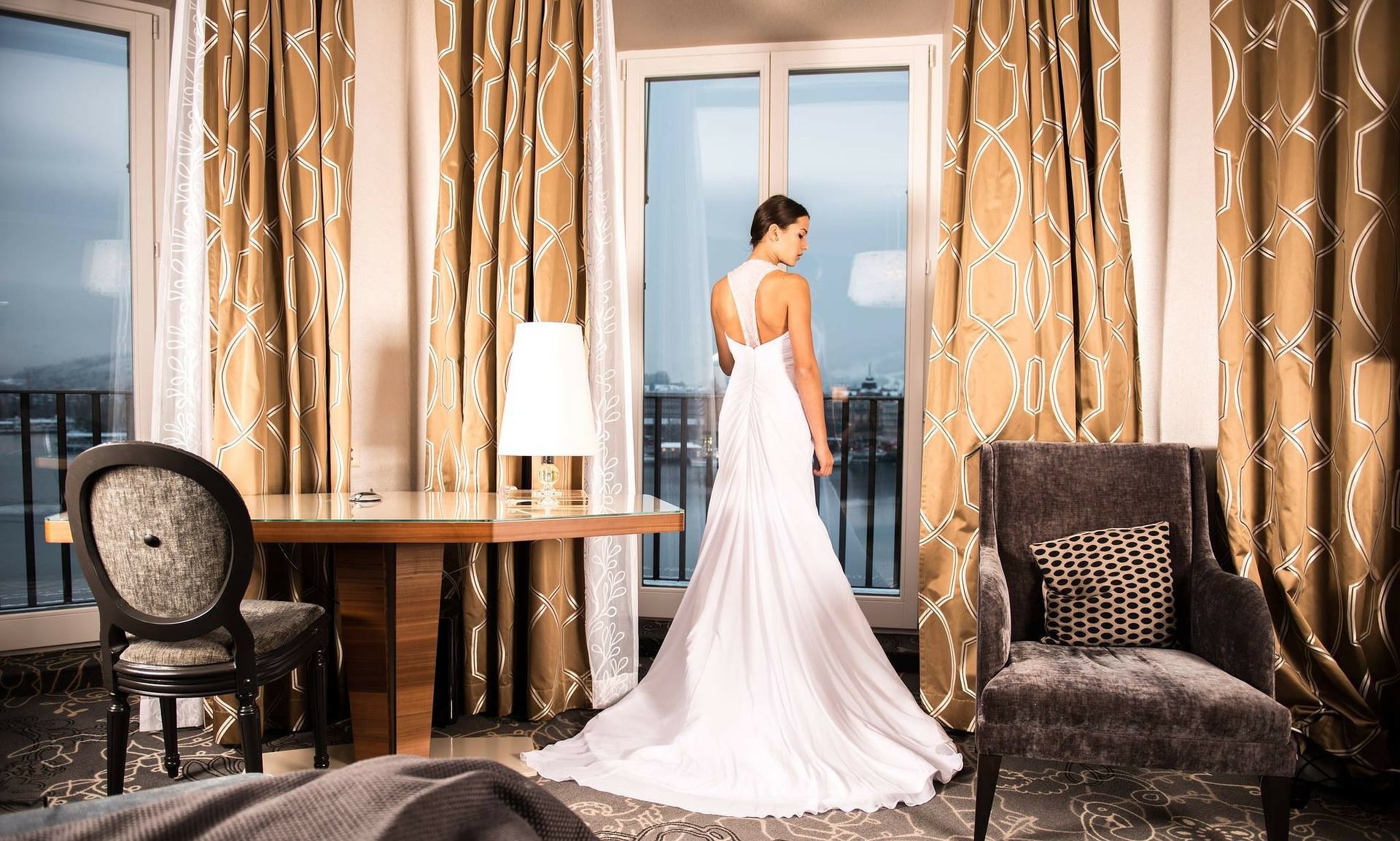
Create an open, airy, inviting lobby space.
The key to interior design is marrying functionality with visual appeal. A hotel lobby, for example, should feel inviting and should draw people into the space.
One effective way to do that is with clever and strategic mirror placement. Mirrors naturally make spaces feel larger, more open, and airier. Placing large-scale mirrors on the walls or ceiling, as seen in the LINE hotel, creates that visually appealing, inviting atmosphere.
Interested in incorporating mirrors into your commercial interior design? Here are some tips for optimizing daylighting with mirrors.
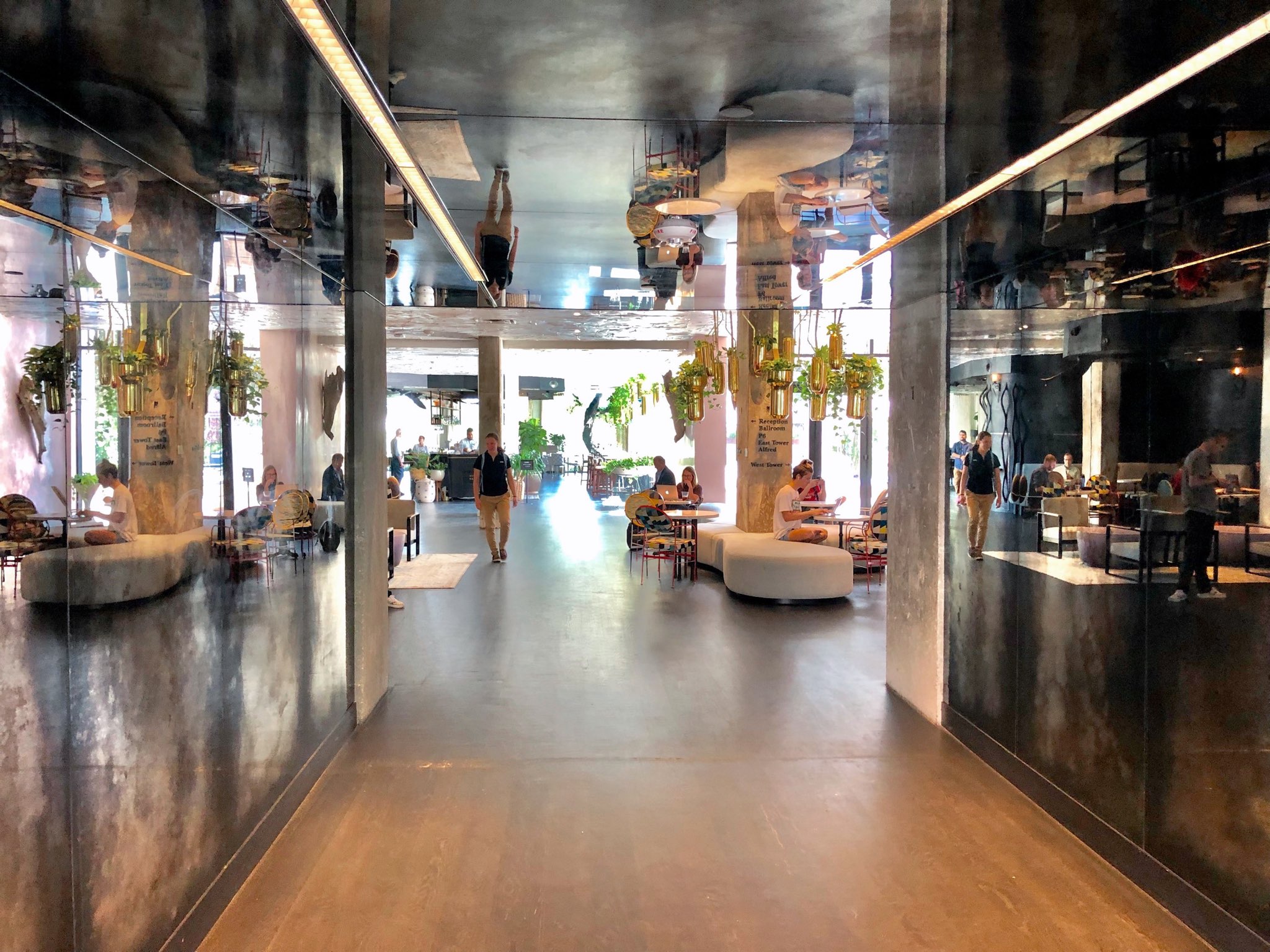
Mirrored walls and ceiling in the LINE hotel (downtown Austin, Texas)
Go timeless to avoid frequent, expensive redesigns.
Done smartly, interior design will provide a significant return on your investment. Done without a strategy, you can quickly spend a lot of money but not see a significant return.
One of the biggest ways to help ensure positive ROI on your interior design work is to strive for a timeless look. If you invest heavily in trends, you run the risk of your hotel quickly looking dated. If you can achieve a timeless aesthetic, you won’t have to rush to invest in redesigns any time soon.
One of the most timeless materials you can use to achieve that goal is glass. From glass flooring to antique mirrors to glass countertops, this material provides a look that is…
- Classic
- Sleek
- Upscale
- Modern
- Compatible with many other materials and design styles
Play with lighting to affect mood and tone.
Whereas you want a lobby to be bright and inviting, some spaces benefit from cozy, dim lighting. This includes bars and fine dining areas.
Make sure you’re playing with light strategically throughout the space, and use simple, effective methods (such as frame, wall, or ceiling mirrors) to boost light where it makes sense.
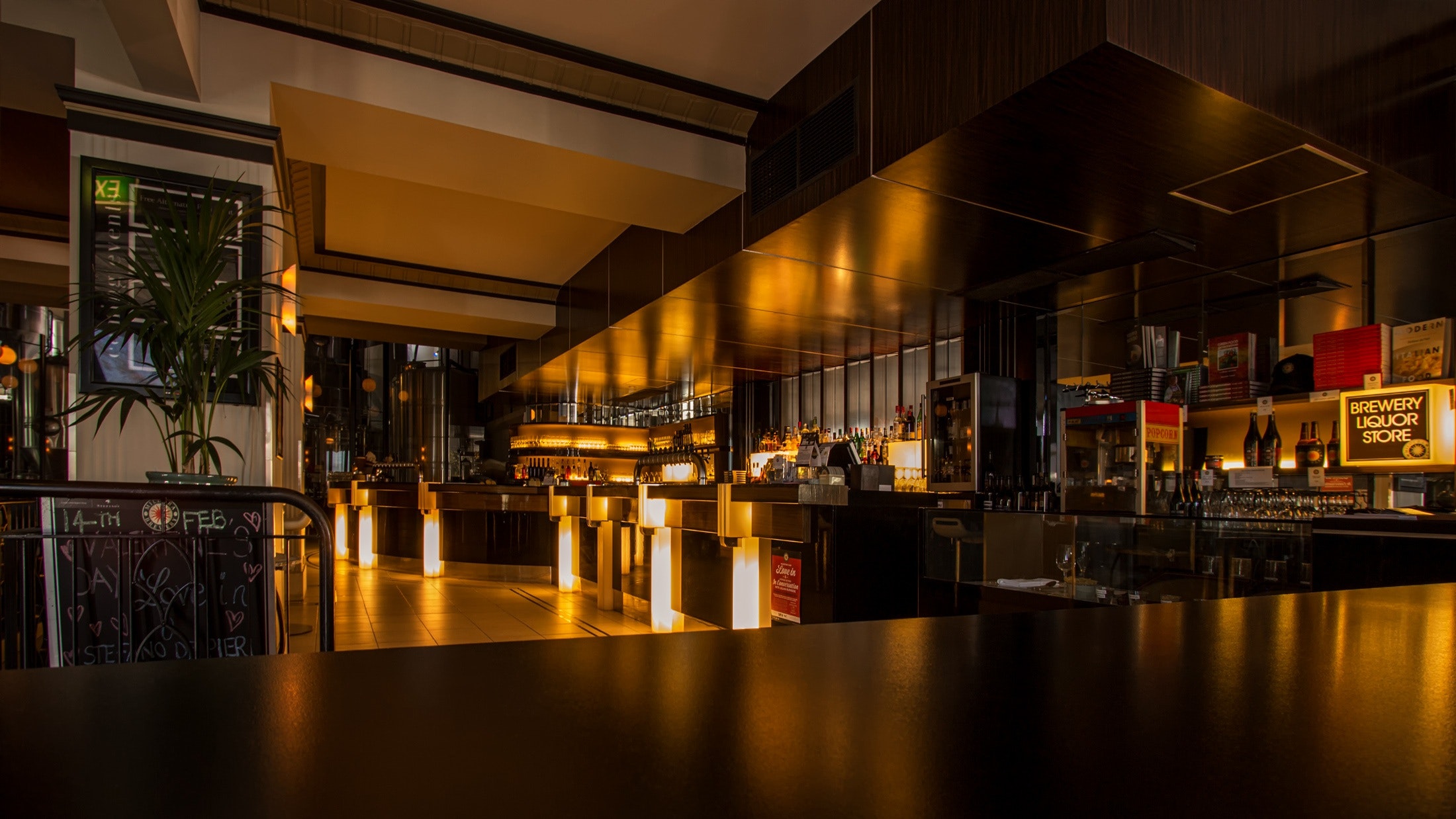
Learn More about the Role of Glass in Stunning Hotel Interior Design
Want to know more about how to thoughtfully and smartly incorporate glass into a hotel’s interior design?
Reach out today. We’re Jockimo, a custom architectural glass manufacturer, and we’re happy to answer any questions you have about what’s possible with glass in modern interior design.


